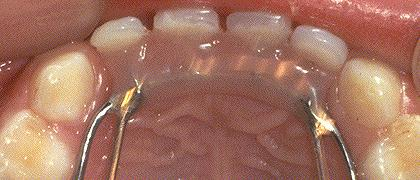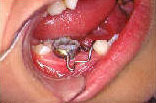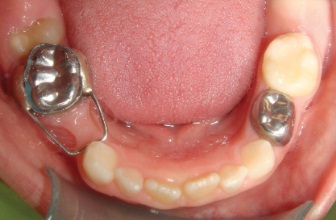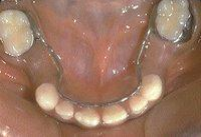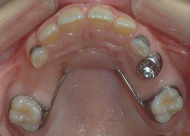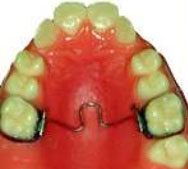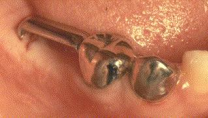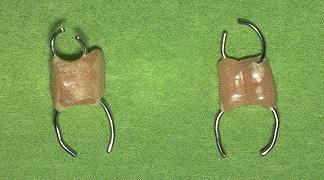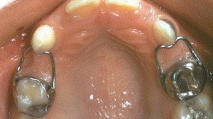Introduction
Humans have two sets of dentitions, namely, the deciduous dentition and the permanent dentition. Teeth in the deciduous dentition appear in the oral cavity when a child is around six months old, and continue to do so until two and a-half years old. There are twenty teeth in the deciduous dentition which is known as the primary dentition, and by age 11 to 12 years, all these teeth will have been replaced by the permanent dentition through a process called exfoliation. The eruption of the first permanent tooth usually occurs at age 6 – 7 years, starting with the first permanent molar. The replacement of the deciduous teeth is usually between the ages of 6 to 12 years following its chronology of permanent tooth eruption. However, deciduous teeth can be lost earlier or prematurely due to several reasons.
In general, teeth are important for eating, speech and appearance; however, deciduous teeth are essential in guiding the erupting permanent teeth into their normal position. Early or premature loss of a deciduous tooth may cause a drift of the permanent tooth causing space encroachment of another teeth resulting in a malocclusion in the permanent dentition.
Some causes of early loss of deciduous teeth or missing permanent teeth are:
- Tooth extraction as a result of severe caries (main reason)
- Tooth knocked out in a fall, accident or trauma
- Missing at birth (congenital)
- Diseases or medical conditions
Early loss of deciduous tooth or missing permanent tooth is one of the most common causes of malocclusion. To maintain the space, a space maintainer may be recommended to avoid drift of other teeth that may result in crowding and thus requiring orthodontic treatment at a later stage. Space maintainers are fitted to prevent or reduce the conditions described earlier, and they are removed when the new tooth erupts or the abutment tooth starts to loosen.
Indications And Contraindications For Space Maintainers
It is best that that you bring your child to the dentist for a consultation as not every case of a missing tooth or teeth needs a space maintainer. If it is a front tooth then there is no need for a space maintainer. A paediatric removable partial (Figure 1) can be fabricated to replace the teeth for cosmetic reason. Among the indications and contraindications for space maintainers are:
Indications:
- If the space shows signs of closing.
- If the use of space maintainer will make future orthodontic treatment less complicated.
- If the need for treatment of malocclusion at a later date is not indicated.
- When the space should be maintained for two years or more.
- To avoid supra eruption of the opposing tooth.
- To improve the masticatory function or chewing and restore dental health.
Contraindications:
- If the radiograph shows that the succeeding tooth will erupt soon.
- If the radiograph shows one third of the root is already calcified.
- If the space shows no sign of closing.
- When the space left is greater than the need for the permanent tooth to erupt.
- When the succeeding tooth is absent.
Types Of Space Maintainers
There are many types of space maintainer. It can be classified according to:
- Function:
- Fixed, good patient compliance but unable to prevent rotation or tipping of adjacent teeth.
- Removable, suitable for anterior tooth loss but dependent on patient compliance.
- Activity:
- Functional
- Non-functional
- Retention:
- Active
- Passive
- Site:
- Unilateral, usually replacing one tooth.
- Bilateral, usually cemented with bands on the back teeth on both sides of the mouth. The bands are connected by a wire just behind the incisors; most useful if there is more than one tooth missing or preventing the lower incisors from tipping.
- Material:
- Metal
- Plastic
Selection of the space maintainers depends on several factors such as the child’s stage of development, the dental arch involved, the tooth that is absent and the status of the teeth adjacent to the lost teeth. Commonly used space maintainers are:
- Removable (Figure 1), can be functional or non-functional type, it is like a removable partial denture; mesio-distal space and vertical space are maintained, masticatory function is restored in functional type while aesthetics and speech are improved.
- Band and Loop (Figure 2), most commonly used, unilateral fixed type, used in posterior segments.
- Crown and Loop (Figure 3), stainless steel crown is used as an abutment, stronger than band and loop, cementation failure is less likely, excellent choice if tooth needs restoration.
- Lingual Arch Holding Appliance (Figure 4), mandibular incisors often erupt lingually and pushed forward by tongue, should not place with primary incisors
- Nance’s Palatal Holding Appliance (Figure 5), a simple maxillary palatal arch but does not contact the anterior tooth
- Transpalatal (Figure 6), can be used like Nance, the advantage is less tissue irritation and more cleansable while the disadvantage is possible tooth shift due to lack of anterior stop.
- Distal Shoe (Figure 7), used when second primary molar requires extraction and first permanent molar has not erupted, will be replaced with another type of space maintainer when the first permanent molar erupts.
- Removable Unilateral (Figure 8), this space maintainer however, is too small and not suitable for children as they may swallow the appliance and cause choking.
- Combination Band and Loop & Crown and Loop in one arch (Figure 9), a combination of unilateral space maintainers on both sides of the dental arch.
|
Figure 1: Removable Partial
|
Figure 2: Band and Loop
|
|
Figure 3: Crown and Loop
|
Figure 4: Lingual Arch Holding
|
|
Figure 5: Nance’s Palatal Holding
|
Figure 6: Transpalatal
|
|
Figure 7: Distal Shoe
|
Figure 8: Removable Unilateral
|
|
|
|
|
Figure 9: Combination Band and Loop & Crown and Loop in one arch
(Photographs adapted from https://depts.washington.edu) |
|
Care Of The Space Maintainers
The space maintainer may cause discomfort for a short period of time. Swallowing, eating and speaking may be difficult and the tongue needs to adapt to having an appliance in the mouth.
Routine check- ups are necessary to observe the eruption of the permanent teeth, growth of the jaws and health of the teeth. The space maintainer may need adjustments as permanent teeth erupt. In some instances, space maintainers have to be reconstructed or a different appliance made due to timing, sequence and position of the erupting dentition.
Some helpful reminders:
- To prevent cavities from forming around the teeth, greater care should be taken to ensure that the teeth are brushed and flossed daily.
- To prevent the loss or damage of space maintainer, the following must be avoided:
- Chewing gum
- Sticky candy and caramel
- Bite on anything hard such whole apples, carrots and ice
- Tugging or pushing the space maintainer with fingers, tongue or other objects such as a pen or pencil
- If the space maintainer becomes loose or breaks, it is a must to see the dentist as soon as possible. There is a risk of swallowing or inhaling it into the lung.
If adjacent teeth move as a result of a lost space maintainer, the condition may worsen. As a result, more extensive and costly treatment may be required to correct the occlusion.
References
- Barberia E, Lucavechi T. Free-end Space Maintainers: Design Utilisation and Advantages. J Clin Pediatr Dent. 2006; Fall; 31(1):5-8
- Goenka P, et al. Simple Fixed Functional Space Maintainer. International Journal of Clinical Pediatric Dentistry 2014;7(3):225-228
- https://depts.washington.edu/peddent/AtlasDemo/space010.html
| Last Reviewed | : | 28 August 2020 |
| Writer | : | Dr. Khairol Niza bt. Ahmad |
| Accreditor | : | Dr. Lawrence Mah Hon Kheong |
| Reviewer | : | Dr. Hjh. Rashidah bt. Dato’ Hj. Burhanudin |


